Hey readers,
Customer expectations are constantly evolving, with traditional ecommerce solutions you cannot fulfill the expectations. That’s where the benefits of headless commerce comes into play.
This innovative approach breaks down the barriers and transforms your online businesses to engage with your customers.
Forget the days when your online store needs to stick with rigid and outdated structures.
With headless commerce, now your businesses can create fast and customizable shopping experiences. It gives the same type of enhanced experience from smartphones to smartwatches.
But why headless commerce is so special?
You might be wondering why are more businesses making a switch to decoupled commerce.
You’ll get to know the answers to the two questions as we enter into the top benefits of headless commerce.
Key Takeaways on Benefits of Headless Commerce
- The benefits of headless commerce include flexibility, customization, and unique front-end experiences for your customers.
- Flexible commerce solutions improves page load speeds and reduces bounce rates. Overall, it boosts the SEO performance to get more traffic.
- A key advantage of headless commerce is it maintains a high level of performance in the peak traffic hours too.
- Personalized shopping experience across all the platforms and devices is one of the best headless commerce advantages.
- Benefits of headless commerce include faster development cycles, reduced costs, and the ability to launch innovations quickly.
Transform Your Business with the Benefits of Headless Commerce – Start Now
Is Headless Commerce the Future of the Online Ecommerce Industry?

Businesses searching for an edge in the rapidly changing ecommerce world are increasingly looking towards headless technology. By decoupling the front-end and back-end of an ecommerce website, it is more adaptable, customizable, and scalable which is why it is regarded as one of the most significant innovation options for the industry.
Let’s explore some headless commerce benefits data that supports this statement from various groups:
- Gartner has projected that by 2025 over 80% of customer experiences will be personalized through headless architecture development since they can integrate different front-end systems powered by the robust back-end system.
- Research from Google showed a 7% decline in conversions every second delayed on pages which clearly shows how important pace is when trying to enhance an online store’s loading time.
- A report by Accenture reveals that businesses with good omnichannel strategies maintain 89% of their clientele while those with less effective ones manage only 33% remaining.
- Research carried out by Forrester indicates that organizations employing headless architectures are at least 50% more likely to grow their markets due to increasing demand thereby gaining a long-term competitive edge.
- Further research from McKinsey shows that personalization can increase customer satisfaction rates by 20%, underscoring the benefits of headless commerce as a way of improving the customer journey.
- According to research done by Adobe, companies that have deployed customizable ecommerce solutions can shorten their time-to-market by as much as 30%, thus giving them a head start in introducing new products or adapting to market changes.
Top 15 Benefits Of Headless Commerce
Here are some benefits of headless commerce that make it the ideal choice on choosing it for ecommerce development.
- Flexibility in Headless Commerce
- Ability To Adapt
- Scalable Ecommerce Solutions
- Faster Page Loading
- Customized User Experience
- Integration with Third-Party Services
- Reduced Development Time and Costs
- Improved SEO
- Enhanced Security
- Future Proof Ecommerce Solutions
- Seamless Omnichannel Experience
- Connecting with Customers through E-commerce Newsletter
- Adaptability Across Devices
- Dynamic Marketing – Adjusting Strategies Based on User Trends
- Time-Speedy Innovations
1. Flexibility in Headless Commerce

80% of companies using headless commerce report an enhanced ability to innovate and experiment with new design elements or features.
API-driven commerce allow merchants to customize the front end of their online store. With this level of freedom, they can make changes to the user interface, incorporate new features, and experiment with different designs.
Headless commerce benefits also include businesses utilizing multiple frontend frameworks together. And provides greater flexibility to design and to enhance the user experience.
How It Improves Your Site
Flexibility in headless commerce enables highly customized and flexible frontend designs to improve user experience. Also allows faster updates and innovations.
2. Ability To Adapt

75% of enterprises that use API-first ecommerce platforms report that its flexibility helps them to change quickly to new market demands and technologies.
Customizable ecommerce solutions provide greater flexibility than traditional ecommerce platforms.
Traditional platforms have limited built-in features but headless technology allows you to use any framework to build the front-end of your ecommerce platform.
Freedom to flexibility in design gives custom ecommerce experience for your customers.
How It Improves Your Site
Headless solutions help businesses to easily integrate new technologies. Also allows faster adaptation to changing market trends and customer preferences to maintain a competitive edge.
3. Scalable Ecommerce Solutions

70% of businesses that use flexible commerce solutions report better scalability to handle increases in traffic and transactions.
One of the best headless commerce advantages is it provides an incredibly scalable approach with the separation of the frontend and backend components.
By doing so, merchants can add new features or scale up the front end without disruption to the back end.
So your online store can manage a high volume of traffic and transactions while maintaining optimal user experience and performance.
How It Improves Your Site
Decoupled front-end and back-end help to scale independently. The website will grow even during peak traffic times.
4. Faster Page Loading
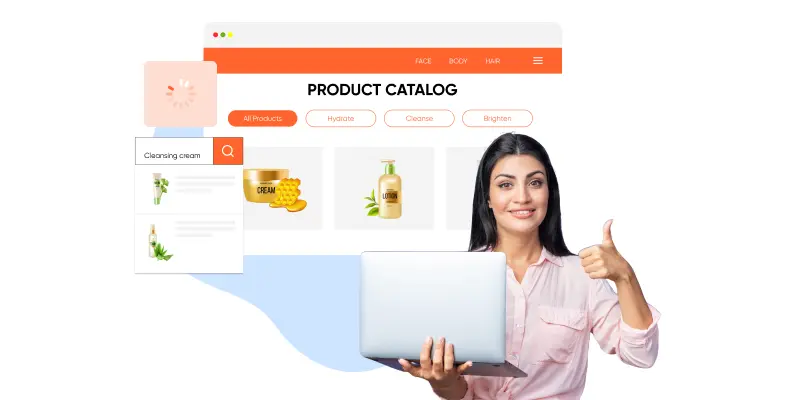
53% of mobile users walk away from a site if it takes longer than 3 seconds to load.
Headless solutions have the potential to enhance page speed. Which plays a crucial role in the improvement of user experience and SEO.
Separation of frontend and backend components in headless commerce architecture reduces the time taken by the browser to load the page. It leads to faster loading times.
Also, this separation makes the businesses optimize the code for better performance to improve the page speed even better.
How It Improves Your Site
Headless architecture reduces page load times and allows businesses to optimize performance, improve user experience and SEO rankings.
5. Customized User Experience

89% of marketers report that personalized shopping experiences lead to higher customer engagement and conversion rates
Scalable ecommerce solutions allows businesses to tailor their user experience to their brand identity and values.
Merchants can design a unique user interface that caters to their requirements with the frontend technology stack.
Furthermore, utilizing customer data to personalize the user experience can boost engagement and conversion rates.
How It Improves Your Site
Headless ecommerce enables businesses to design a unique front, personalize experiences based on customer data, and create a user interface that reflects their brand identity, driving higher engagement.
6. Integration with Third-Party Services

Businesses using API-first ecommerce solutions integrate third-party services like payment gateways and marketing tools 45% faster, allowing for quicker adaptation and seamless operation
Major headless commerce advantages simplify the process of integrating with third-party services like payment gateways, shipping providers, and marketing automation tools.
Here, merchants can select the most suitable third-party services to meet their requirements and integrate them smoothly into their online store. This facilitates the smooth running of business operations, reduces manual work, and improves customer experience.
How It Improves Your Site
API-first ecommerce platform gives easy integration to the most suitable third-party services to provide customized solutions to meet specific business needs.
7. Reduced Development Time and Costs

Headless commerce can reduce development time and costs by up to 40%
Headless commerce benefits also include a decrease in development time and costs. Merchants can develop independently to result in significant savings in time and development costs.
Moreover, they can reuse the same backend for various front-end applications. It eliminates the need to rebuild the backend for each new project.
How It Improves Your Site
It impacts faster development cycles by making it easier to adapt to new front-end applications.
8. Improved SEO
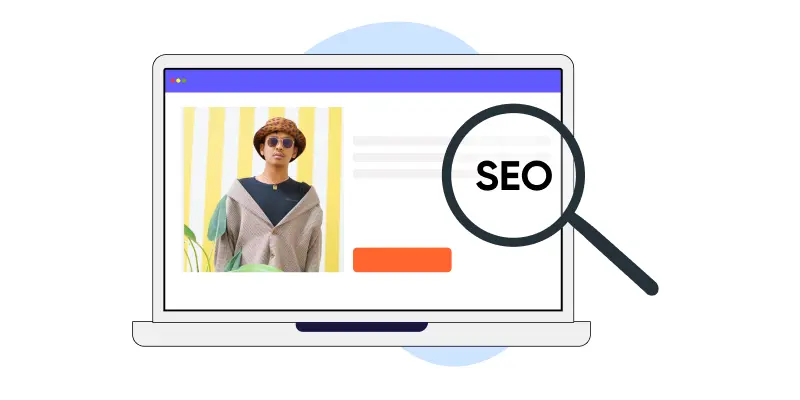
Businesses that have implemented headless platforms reported a 30% improvement in organic traffic due to optimized SEO-friendly frontend code and faster page load times
A headless platform has the potential to enhance SEO by enabling businesses to optimize their frontend code for better search engine rankings, which is one of the key headless architecture benefits.
Merchants can choose a frontend technology that is SEO-friendly and optimize the code for better performance. As a result,
- Improvement in page load time
- Reduction in bounce rates
- Increase in organic traffic
- Faster content updates
Also, one of the benefits of headless ecommerce is that businesses can create SEO-friendly URLs, meta tags, and structured data.
How It Improves Your Site
As an overall, it boosts your search engine rankings and leads to a higher amount of revenue generation.
9. Enhanced Security
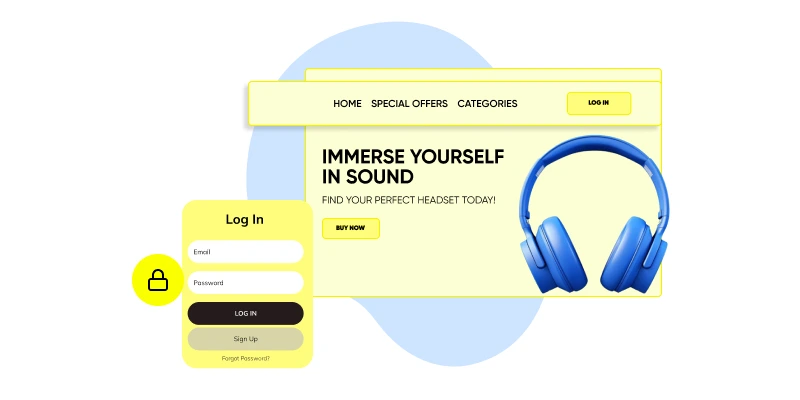
Headless systems reduce data breaches, with 43% of breaches affecting small businesses, and 50% of retail breaches occurring in ecommerce
Headless technology is an innovative approach that can significantly enhance the security of online stores.
By separating the frontend and backend components, sensitive data such as customer information, payment details, or order history is stored separately, thus reducing the risk of data breaches.
With headless commerce benefits, businesses can choose the most appropriate security measures for each component, ensuring that their online store is secure and compliant with industry standards.
Overall, headless ecommerce is an effective way to protect your customers’ data and your business reputation.
How it Improves Your Site
By isolating the front end and back end, headless technology enhances security by reducing exposure to sensitive data and minimizing attack surfaces.
10. Future Proof Ecommerce Solutions

Headless commerce is expected to grow at a 27.7% CAGR from 2022 to 2029, driven by its flexibility in adapting to evolving business needs and technologies
Forward-thinking solution that can easily adjust to evolving business needs and technologies with headless commerce benefits.
Merchants have the flexibility to select the most suitable frontend technology stack that aligns with their requirements and is also compatible with future updates.
Additionally, they can incorporate new features or modify the user interface without interfering with the backend processes. This guarantees that their online store stays current and competitive.
How it Improves Your Site
Future-proof ecommerce architecture allows merchants to select the best frontend technology stack, making it easier to incorporate new features and updates without disrupting backend processes.
11. Seamless Omnichannel Experience

Customers who engage across multiple channels tend to spend 10-15% more than those who use just one channel
One of the best headless commerce advantages is the seamless omnichannel experience.
Businesses can deliver a consistent shopping experience through various platforms like mobile apps, social media platforms, and IoT devices. Customers can smoothly travel from one channel to another without any hassles in their shopping journey.
For instance, a customer may search for products on a mobile app and then conclude the purchase on a desktop computer.
How It Improves Your Site
It improves your customer’s satisfaction and boosts engagement. It leads to higher conversion rates and an increase in sales.
12. Connecting with Customers through E-commerce Newsletter

60% of consumers say they made a purchase after receiving a personalized email, highlighting the effectiveness of email marketing in driving sales
With these headless ecommerce benefits, building relationships with customers is very easy. Emails about online shopping are an excellent method to stay in contact with customers by informing them about new products, exclusive offers, and thought-provoking articles.
Businesses can easily incorporate this communication method into their strategy, as the headless architecture is easily integrated with newsletter platforms.
Customized ecommerce newsletters are one of the headless commerce advantages; they foster strong customer relationships and encourage repeat business.
How It Improves Your Site
API-first ecommerce solutions integrates smoothly with newsletter platforms, enabling easy customization of email campaigns that keep customers engaged and informed.
13. Adaptability Across Devices

79% of smartphone users have made a purchase online using their mobile device in the past six months
Nowadays, people use many gadgets like computers, tablets, and phones to buy things online.
Online shopping without a physical store ensures people have a smooth experience on different websites and apps.
Businesses can design and enhance their user interfaces for different kinds of devices independently. This benefit gives a positive experience in all the devices. This retains the client’s interest and loyalty.
How It Improves Your Site
Businesses can tailor user interfaces for various devices to provide a seamless experience across computers, tablets, and phones.
14. Dynamic Marketing

73% of consumers are influenced by social media in their purchasing decisions, highlighting the importance of reaching customers across multiple platforms
Headless ecommerce is not just about regular websites; it does well in multiple locations as well. This is what makes more customers to be reached by businesses through the Internet.
With APIs, companies can easily integrate and manage their website sales on social media, mobile apps, blogs, and other new channels.
It helps brands have a common identity across different platforms thus reaching more individuals and taking advantage of new opportunities in the expanding online marketplace.
How It Improves Your Site
With APIs, businesses can easily extend their reach across social media, mobile apps, blogs, and other platforms while maintaining a consistent brand identity.
15. Time-Speedy Innovations
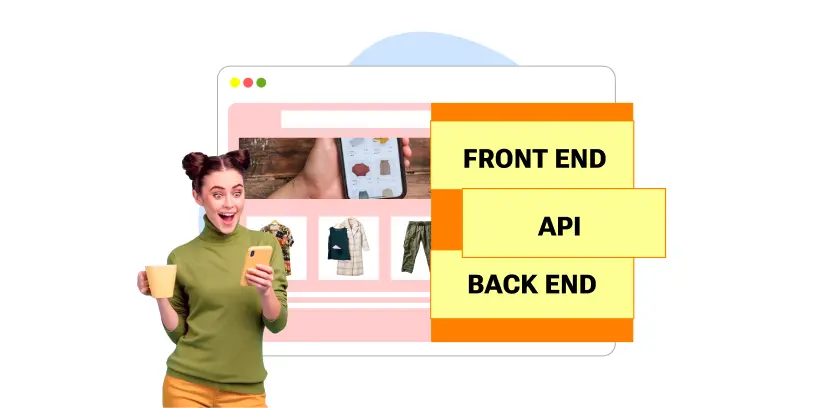
62% of businesses report that the ability to quickly launch new features is a major advantage of headless commerce, helping them stay competitive and agile in the market
In an era of stiff competition among many firms for excellence, being able to invent and take to markets soon becomes necessary.
In headless ecommerce, businesses can update their online shops at ease because each one of them deals with appearances and functionalities separately.
We can add new components to improve the system without affecting everything else in this way. This enables them to stay ahead of others and adjust to changes within the market while ensuring that consumers are happy with their performance.
As a result, they bring new products and services into the market much faster than their competitors do.
How It Improves Your Site
By separating front-end design and back-end functionality, businesses can quickly implement changes or add new components without disrupting the entire system.
Overall, these headless advantages can help businesses improve their ecommerce capabilities, increase customer engagement and loyalty, foster e-commerce growth, and stay competitive in a rapidly changing marketplace.
Transform Your Business with the Benefits of Headless Commerce – Start Now
3 Key Reasons to Consider the Headless Commerce Benefits

Apart from the headless commerce benefits, several major considerations must be taken into account when it comes to running a successful business. The considerations are market research, customer needs, and competition. Carefully consider these factors so that businesses can make calculated decisions that lead to an increase in profitability and growth.
1. Market Research
Market research is an important thing for all types of business. It involves the collection of data on consumer behavior, preferences, and trends. With market research, businesses can gain valuable insights into their target market and develop products and services that meet their customer’s needs. This can help businesses stay ahead of their competition and maintain their position in the market.
2. Customer Needs
A major consideration for businesses is to understand customer needs. Identify the needs of the customers and then businesses can alter their products and services to meet those needs. This helps to achieve high levels of customer satisfaction, loyalty, and repeat business. It can also help businesses attract new customers looking for products and services to meet their needs.
3. Competition
Finally, businesses must consider their competition when making decisions. Analyze the competitor’s strengths and weaknesses. Businesses can identify areas where they can improve their operations with this analysis. This can help businesses stay competitive and maintain their market share.
Read More: Headless Commerce For B2B: 9 Best Strategies
3 Key Technical Considerations That Highlights Headless Commerce Advantages

Rather than the benefits of headless commerce, there are also some technical considerations that businesses need to take into account when adopting headless technology. Here are some of the technical considerations for headless ecommerce benefits:
1. API Management
API management is critical for headless architecture. Businesses should use APIs that are secure, reliable, and scalable.
2. Microservices Architecture
Microservices Architecture – Scalable commerce platforms host on the cloud all the time. Ensure that your ecommerce platform is designed with microservices architecture in mind.
3. Cloud Hosting
Scalable commerce platforms are often hosted on the cloud. It offers the next level of flexibility to businesses. Choose the right cloud hosting provider to handle high traffic as your business grows.
This strategic approach not only ensures an advanced and scalable ecommerce platform but also enhances flexibility, and innovation, and improves customer experiences. As businesses deal with the challenges of the digital world, focusing on these key elements will help them fully benefit from headless ecommerce.
Conclusion
Now that we’ve seen the benefits of headless commerce it’s clear that this approach is the future of ecommerce. Level up your ecommerce journey with flexibility, scalability, and innovation. Headless commerce is the solution you’ve been waiting for.
The takeaway? It’s time to implement headless commerce into your ecommerce business and increase your sales with higher conversion rates.
Connect with Webnexs to enter into the life-changing journey of your ecommerce business. Make the shift today and leave your competitors in the dust!
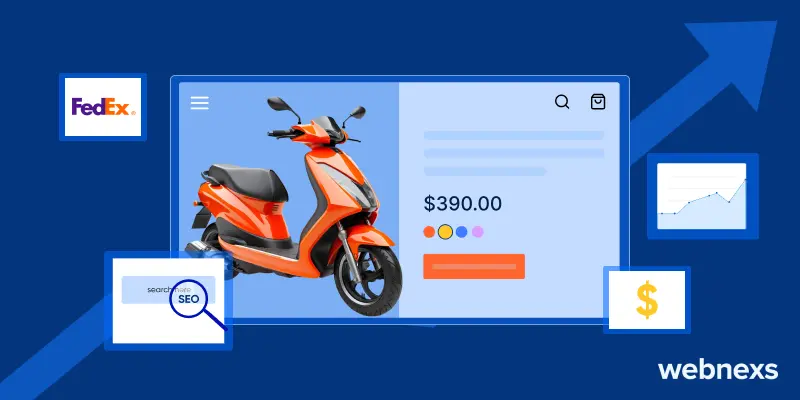





54 Responses
What I feel and understand from this blog is that while the original e-commerce platforms provided front-end tools that could be quickly implemented by companies with no experience selling online, many companies are now hiring trained software developers who want remove the front. the end. training wheels. This is exactly what headless trading achieves.
The front-end training wheels are being removed by many businesses’ highly skilled software developers. Headless commerce succeeds in achieving just this.
E-commerce was initially intended to serve as a ready-made platform for creating online stores. Such platforms could be used by business owners to develop all necessary sales procedures.
You can see from your example that one back end uses APIs to connect to various front ends, which is one of the key characteristics of headless architecture.
Website administrators can easily create, change, and design content and designs with headless commerce, and you won’t need to add code to the backend or hire a development team.
Just 7% of the over 400,000 people interviewed for a Harvard Business Review study were online-only buyers, but 73% used multiple channels to find and buy products.
Oh, right, the fundamental benefits of going headless are that website administrators can create, edit content, and design without any problems, and you won’t need to hire a development team or add code to the backend.
What does that mean for companies trying to stay competitive? Using a headless commerce platform puts you in charge. Are I correct?
I hope you ppl have great ideas on the headless development, would like to know more about it, thanks.
I enjoyed reading your content. Keep doing your best work in headless commerce development.
What a great blog on the benefits of the headless commerce platform, interested to learn more on it?
Hats off to this headless commerce-related content.
Ecommerce brands are looking for new ways to delight their customers and need to look at the headless approach for gaining flexibility in building an online store.
How the headless ecommerce will deliver their customer experience by implementing headless commerce, and eCommerce brands?
To be honest, I generally don’t read. But, this article caught my attention.
What distinguishes headless commerce from more conventional forms of trade?
Thank you for this very informative blog. Unlike traditional software, headless eCommerce platforms take advantage of the flexibility and power of APIs. This makes it possible for you to create a tech stack that is customized to your unique requirements.
What a great piece of writing! You’ve explained the headless commerce definition and its meaning better.
I enjoyed reading your headless cms content. Keep doing your best work.
By replacing the old practice of packaging a commerce solution with a fully integrated storefront, a headless commerce solution becomes the first choice, can you suggest furthermore on this technology, please?
Great stuff on the headless platform!
A wonderful way to present headless commerce and the infusion of its potential in e-commerce information!
All thanks to the ever-expanding gap between front-end and back-end technologies, more and more storefronts are now adopting the headless commerce approach.
Businesses that still use traditional or legacy eCommerce platforms for their online stores are finding it increasingly challenging to meet customer expectations.
Great blog!
Thanks to the ever-expanding gap between front-end and back-end technologies, more and more storefronts are now adopting the headless commerce approach.
Go and give Webnexs headless a try as they’re utilizing the benefits of headless commerce to support demand for the company’s strategic omnichannel strategy, keep doing it, congrats.
Businesses can quickly adopt headless technology touchpoints, shape the buying journey, and become more interactive with innovative digital experiences and personalization.
First, the headless works well only if the company is already using or planning on using multiple channels to connect with customers, was that a myth?
Why is headless commerce receiving so much attention?
Customers feel as though the brand is personalized to them, generating a wealth of brand loyalty, will headless commerce development help in that way or any other?
It makes sense to use headless technology to stand out. Over $1.65 billion has been raised for headless technologies in just the past two years alone.
You are showing excellent understanding!
As reading all your posts, it’s sure numerous e-commerce companies and brands are seeing fantastic results from headless eCommerce.
One of the known advantages of headless commerce is the decoupling of front-end processes from predefined back-end processes in e-commerce.
For all the right reasons, the headless eCommerce platform has grown incredibly popular with consumers. We appreciate you sharing this.
But how can businesses know when the time is right to take their own eCommerce site headless?
So with that, we can conclude Headless eCommerce has huge implications for the customer experience.
There’s also tremendous potential for experimentation and testing if you go for Headless eCommerce development.
Numerous applications, including headless CMS and headless commerce, have gone headless now that the headless trend has really taken off.
If companies want to create a true omnichannel experience for their consumers, headless commerce is crucial, that’s for sure.
As a result, businesses are restricted to the headless platform’s functionality and are unable to develop unique features to attract and retain customers.
Correct, we create a set of components with headless CMS that will be used on the frontend site and any additional sales channels.
It’s interesting to note that headless technology funding has reached over $1.65 trillion in just the last two years.
Making the switch to headless commerce is a significant step, so you’ll need to find a platform that can support your company’s needs as well as its expansion.
The use of APIs (Application Programming Interfaces) connecting the front-end to the back-end systems will play a vital role in the headless trading system.
Are they not using an API layer that enables front-end developers to integrate commerce into any customer experience?
That’s all accurate. Instead of using traditional eCommerce platforms, a headless commerce architecture centralizes content and can deliver it anywhere via API. You are in a good position as a result.
Developers aren’t tied to the platform’s frontend technologies when using the headless approach; that’s fantastic, and thanks for writing this content.
Loved the way the benefits of headless commerce were explained here! It’s nice to see how businesses can improve their site performance and customer experience with this approach.
This article offers great insights into headless commerce and its potential for creating a more flexible and customizable online shopping experience. It really helps break down the advantages clearly for businesses looking to scale.
Very informative read! The focus on how headless commerce enhances adaptability and speed for businesses really stood out to me. Definitely something worth considering for e-commerce sites.
I found this post really helpful in understanding the shift to headless commerce. The idea of separating the front and back end for better control is a game-changer for modern ecommerce.
Great breakdown of why headless commerce is gaining traction. The ability to create more dynamic and personalized shopping experiences seems like a huge benefit for online retailers!